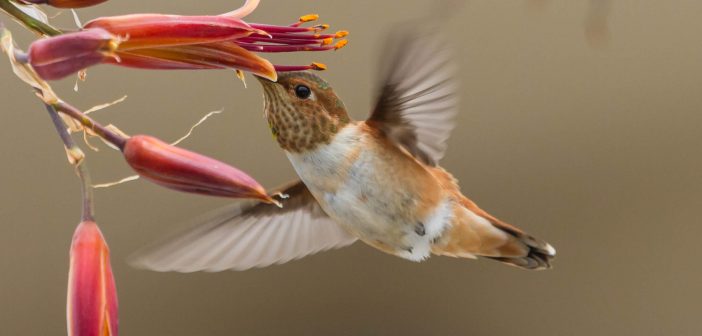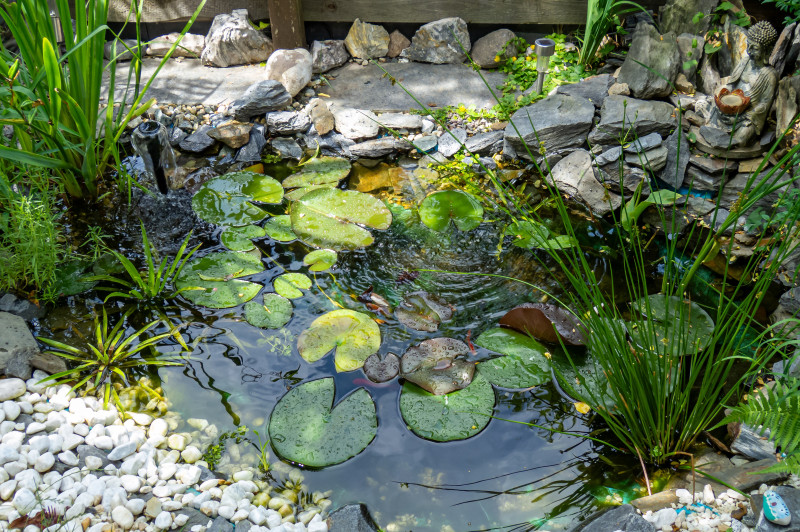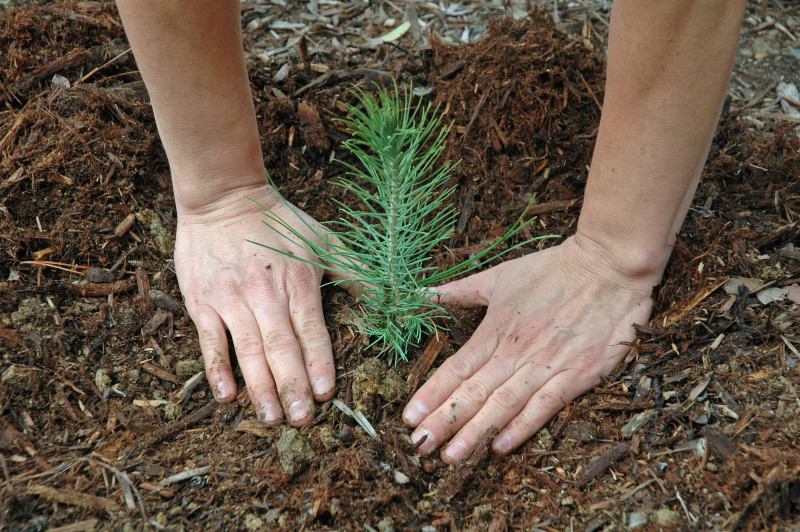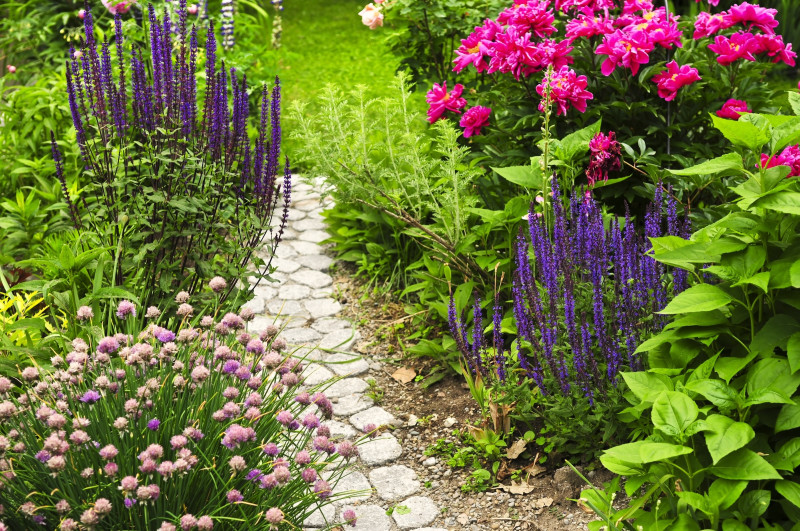Hummingbirds are agility, speed, and fearlessness, all bundled into a 3-inch (8 cm) package wrapped in iridescent colors! Want to draw these entertaining cuties to your yard? Then charm them with nectar plants they love.
You’ll enjoy their aerial performances while also giving them a chance to rest—contradictory as it sounds. That’s because they generally expend enormous amounts of energy in their daily search for food, so when you provide them with a convenient spread of nectar plants all laid out in one place, they can go right to it, drink some satisfying nectar, and fly to a nearby spot to sit and relax. Watch their path when they fly to and from your garden to see where they go so that you can get a good look at them while they’re sitting still (tip: have binoculars at hand).
Did you know that hummingbirds serve a higher purpose than just entertainment for us? That’s because their movement among plants spreads pollen from flower to flower. (There are more than 135 native plant species in the world that rely exclusively on these tiny beings for cross-pollination and will cease to exist without them.
A few places in the U.S. see hummingbirds all the time because some species live there year-round. Many of us are limited to seeing them primarily during their spring and fall migrations north and south. So, be ready for them! America’s long-distance hummingbirds
Go bright!
Hummingbirds are most drawn to bright colors, especially red. Plant your flowers in masses of the same color—a single red plant here and a single yellow there won’t scream “come to me” to a tiny bird passing overhead. (You’ll discover it’s more appealing to the human eye, as well).
Plant several varieties and include species that flower at differing times, so a group of something is always in bloom. If you decide to include some hybridized plants, select single-bloom varieties, as hummingbirds prefer them over double-blooms. Slow-motion video of how hummingbirds “sip” nectar.
Common name Type Latin name Blooms Zone
Beebalm P Monarda didyma MS–F 4–7
Blue Flag P Iris versicolor ES 5–9
California Fuchsia P Epilobium canum MS–EF 5–9
Canada Lily (plant bulbs only) P Lilium canadense MS–EF 3–9
Cardinal Flower P Lobelia cardinalis LS–EF 3–9
Coral Bells P Heuchera sanguinea MS 4–9
Coral Honeysuckle Shrub Lonicera sempervirens S–F 4–9
Currant (Golden, Red, Black) Shrub Ribes spp. MSp 3–8
Fire Pink P Silene virginica MSp 4–8
Garden Phlox P Phlox paniculata MS–EF 4–8
Great Blue Lobelia P Lobelia siphilitica ES–EF 3–9
Indian Blanket (Blanket Flower) A Gaillardia pulchella MS–MF 3-10
Indian Pink P Spigelia marilandica LSp–ES 5–9
Lemon Horsemint A, B Monarda citriodora LSp–MS 2–12
Milkweed (Common, Marsh, Butterfly, etal) P Asclepias spp. S–F 2–9
Monkeyflower P Mimulus cardinalis MSp–MS 6–9
Mountain Rosebay Shrub Rhododendron catawbiense Sp 4–8
Nasturtium A Tropaeolum majus MS–EF 1–13, incl. Alaska, Hawaii, Puerto Rico
Phlox A, P Phlox spp. MS–F 3–8
Purple Beardtongue P Penstemon cobaea MSp–ES 3–8
Red Buckeye Shrub Aesculus pavia ESp–ES 5–9
Red Columbine P Aquilegia canadensis LSp 3–8
Red Iris P Iris fulva ESp–LSp 5–11
Red Thistle B Cirsium occidentale Sp 2–9
Rose Verbena P Glandularia canadensis LS–EF 6–9
Royal Catchfly P Silene regia MS–EF 4–8
Scarlet Bugler Penstemon P Penstemon centranthifolius MS 3–8
Scarlet Monkeyflower P Mimulus cardinalis MSp–EF 6–9
Scarlet Sage A, P Salvia coccinea MS 4–10
Southern Blue Flag Iris A Iris virginica Sp 5–9
Spiked Gayfeather P Liatris spicata MS 3–10
Spotted Jewelweed A Impatiens capensis MS–EF 4–10
Trumpet Vine P, Vine Campsis radicans ES–MF 4–9
Wild Bergamot P Monarda fistulosa MS 3–9
Wild Lupine P Lupinus perennis Sp–ES 3–9
Wild Petunia A Ruellia caroliniensis ES–LF 3–8
Yellow Honeysuckle P, Vine Lonicera flava LSp-ES 4–9
*Top photo: Allen’s Hummingbird, Selasphorus sasin. (Dawn Beattie / Flickr; cc by 2.0 )
More reading:
Hummingbird nectar recipe
Explore an insect-friendly yard
Types of bird feeders





